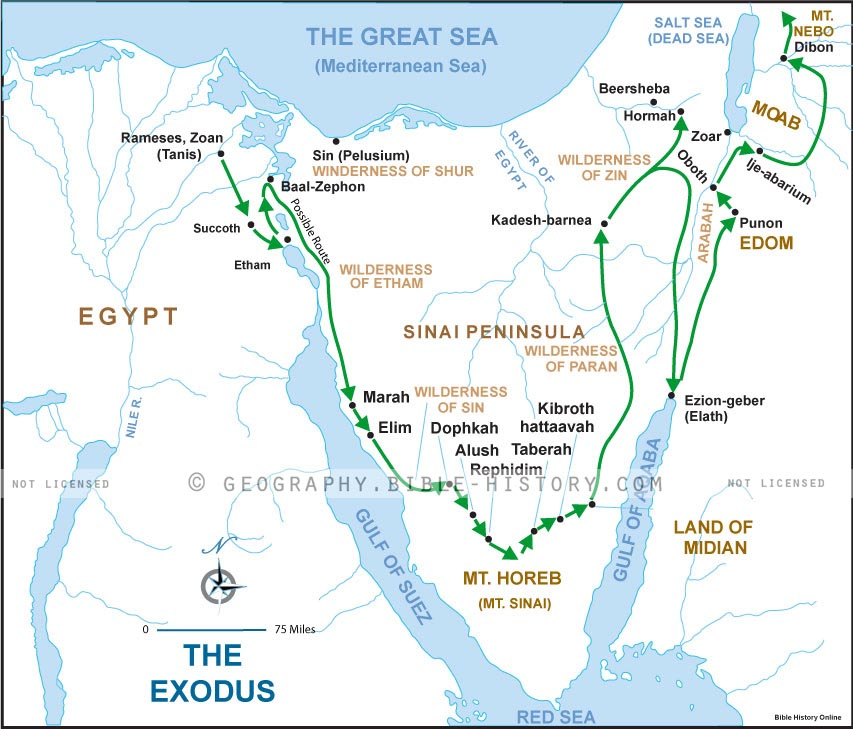JFB.
The Book of Leviticus
Leviticus 16:30 - For on that day shall the priest make an atonement for you, to cleanse you, that ye may be clean from all your sins before the LORD.
Bible Survery - Leviticus
Hebrew Name - Vayyiqra "and He called"
Greek Name - Leviticus "from Levi"
Author - Moses
Date - 1490 BC Approximately
Theme - God's Laws for the Hebrew Nation
Types and Shadows - In Leviticus Jesus is the High Priest
In the Septuagint (The Greek translation of the Hebrew Old Testament), the third book of the Pentateuch is called "Levitikon" ("pertaining to the Levites"), which is an adjective that modifies the word "book." The Levites were the tribe in Israel from which the priests and others prominent in the worship services were chosen, in place of the firstborn sons of all the tribes (Num. 3:45). Leviticus plays a very important and essential role in the Pentateuch. In the same way that it is important to understand the book of Exodus before reading Leviticus, it seems just as important to read the book of Leviticus before reading the books of Numbers and Deuteronomy and the rest of the Old Testament for that matter. The purpose of the book of Leviticus is to make a clear focus on the holiness of God, and a clear distinction on the sinfulness of man in the light of God's holiness. God provides the necessary steps that man needs to take to restore the great fellowship which was lost between God and man as a result of the terrible defilement of sin. God explains the laws that make this restoration possible, in a general sense and also a very specific sense. These laws are intended to govern the whole life of the people chosen to serve God. Because of the focus on God's holiness and how to approach Him the book of Leviticus is clearly the most legalistic book in the entire Old Testament. The core message of God's laws is seen in the absolute statement "Ye shall be holy, for I the Lord your God am holy." Yet the great climax of this book can be clearly seen in Leviticus 16 where God gives the instructions for making atonement for sin on the Great Day of Atonement (Yom Kippur). When the high priest entered into the holy of holies and sprinkled the blood upon the Mercy Seat the sins of the entire nation for the previous year were forgiven by God. The mercy which God showed forth on the day of atonement so foreshadows the work of Christ that the Leviticus 16 has been called "the most beautiful flower of all Messianic symbolism."
In addition to the moral, ceremonial, and civil laws set forth in the book of Leviticus, there are also some historical sections, but these too are centered around the priesthood. These historical portions include the consecration of the priests in Leviticus 8 and 9, the sin and punishment of Nadab and Abihu (Leviticus 10), and the stoning of the blasphemer (Leviticus 24:10 ff). it is interesting that the Levites are not mentioned except one time very briefly and incidental (Leviticus 25:32 ff).
ILLUSTRATIONThe Tabernacle of Moses
The ancient Tabernacle of Moses illustration with the curtain fence, the bronze laver, the bronze altar, the holy place, and the badger skin covering. (Click to Enlarge)
The book may be divided as follows :
Outline of the Book of Leviticus
1 ) Laws concerning Sacrifice (1-7). In this section five types of offerings are discussed: burnt offerings, meal offerings, peace offerings, sin offerings and guilt offerings. This is filled out by a discussion of the sin offering as it is to be observed by various classes of individuals.
2 ) An historical section featuring the consecration of the priests (8-9) and the sin of Nadab and Abihu (ch. 10).
3 ) A section on laws of purification from ceremonial uncleanness (11-15). These furnish instructions as to the appropriate sacrifices and ordinances for ridding oneself of impurity.
4) The Day of Atonement (ch. 16).
5 ) Laws dealing with the conduct of God's people (17-20). These include various religious and ethical laws designed to accent the separation between Israel and the heathen nations.
6) Laws concerning the holiness of the priests (21-22).
7 ) A discussion of holy days and feasts (23-24). Included in this section are the Sabbath, Passover, the feasts of first fruits and harvest, Pentecost, the Day of Atonement and the feast of Tabernacles.
8 ) The Sabbatical and Jubilee Years (ch. 25).
9 ) Promises and threats connected with obedience to the laws (ch. 26).
10) An appendix containing the laws concerning vows (ch. 27).
Quick Reference Map

Map of the Possible Route of the Exodus
(Click to Enlarge)
Quick Reference Maps - Leviticus
Israel During the Book of Exodus
The World During the Book of Exodus
The Exodus of the Hebrews From Egypt
The Red Sea at the Time of Moses
Leviticus Resources
The Giving of the Law
The
Tabernacle
More About the Book of Leviticus
Leviticus
in the Picture Study Bible
The Old Testament
Timeline of the Ancient
World
Back to Bible
History Online